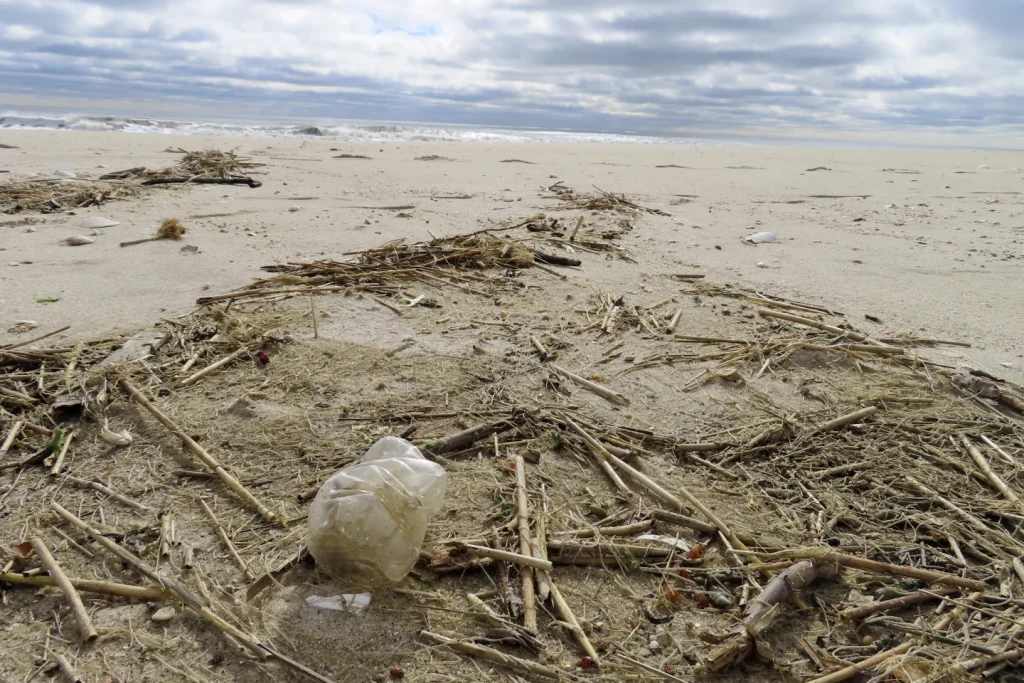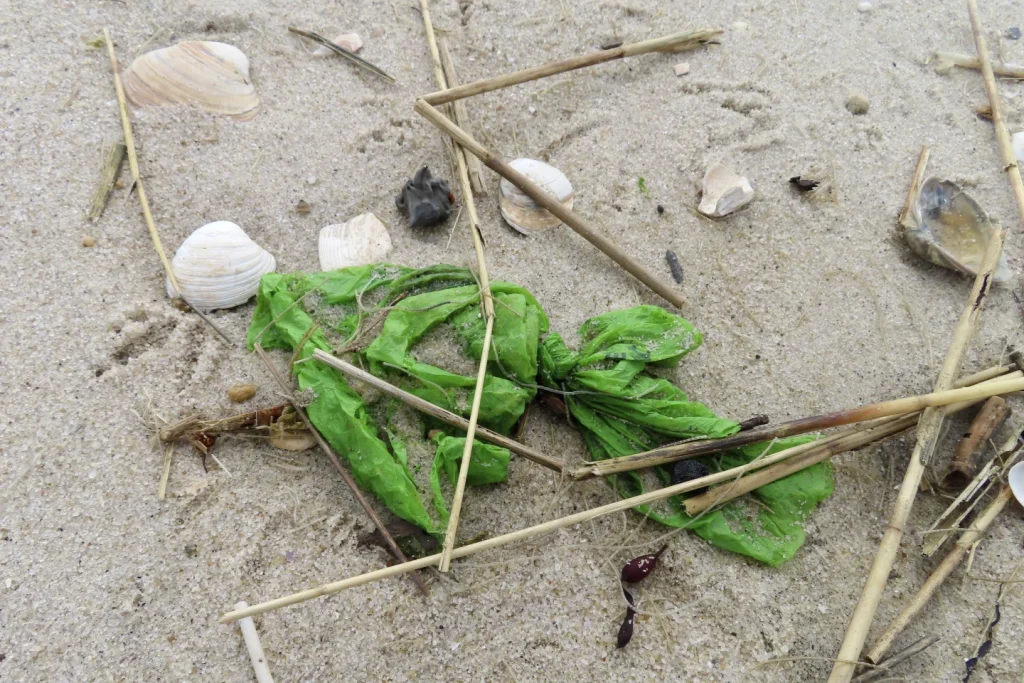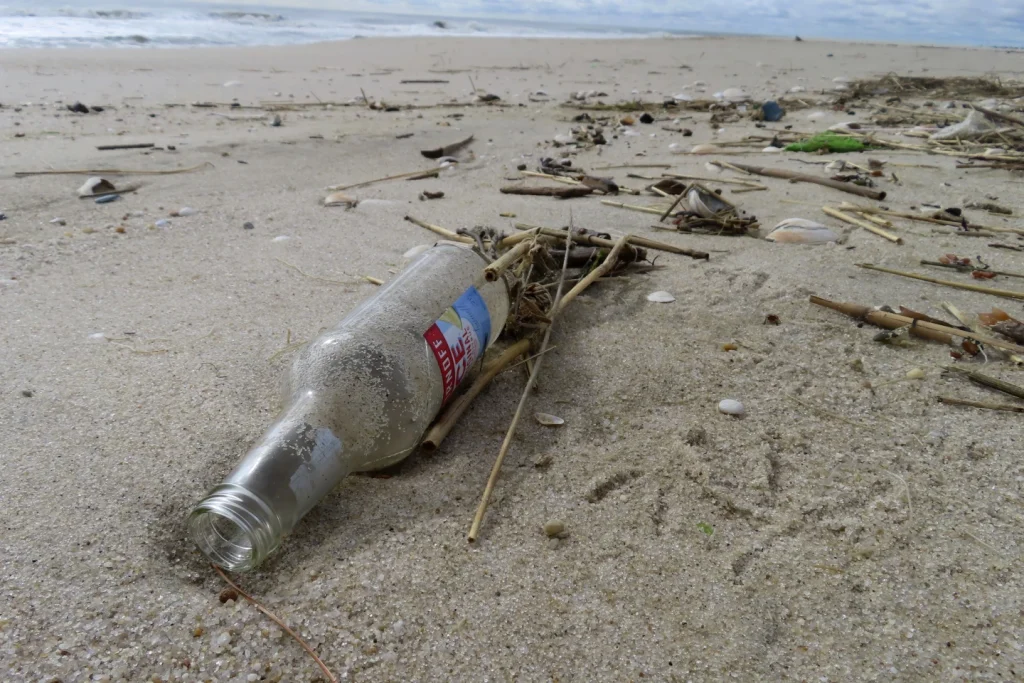As the sun-kissed shores of the Jersey Shore prepare to welcome beachgoers for another season of fun and relaxation, a peculiar narrative unfolds beneath the pristine sands.
The annual ritual of beach clean-up reveals not just the typical detritus of modern life – bottle caps, cigarettes, and plastic fragments – but a treasure trove of bizarre and unexpected items that defy explanation.
In a recent report by the Clean Ocean Action environmental group, the peculiar assortment of objects unearthed by dedicated volunteers paints a vivid portrait of human behavior at its most perplexing and, at times, comical.
Against the backdrop of the 127-mile coastline of New Jersey, nearly 3,700 volunteers embarked on a mission to rid the beaches of unsightly litter, a task that yielded a staggering 176,206 items of refuse.
While the majority of these items were mundane and sadly ubiquitous – remnants of a throwaway culture that plagues our oceans and shorelines – it is the oddities that capture the imagination and spark curiosity.
From a 50-pound bag of rice to a Baby Yoda doll, a severed Barbie head to a food fryer, the list of peculiar finds reads like a surreal inventory of misplaced objects and forgotten belongings.
Among the eclectic assortment of items retrieved from the sands, a cast of characters emerges, each with its own story to tell.
Boxer shorts and a bra lie discarded alongside a bikini, while fake eyelashes and fishnet stockings mingle with a jockstrap and a pregnancy test of unknown result.
The juxtaposition of these items speaks to the diversity of human experiences and the enigmatic ways in which we interact with our environment.

Cindy Zipf, the esteemed executive director of Clean Ocean Action, offers a sobering perspective on the findings of the beach clean-up efforts.
With nearly 8.5 million items of trash collected since the inception of the program in 1985, the report serves as a poignant reminder of our region’s worst littering habits.
From the mundane to the bizarre, the discarded remnants of consumer culture paint a vivid picture of our society’s disregard for the environment and the consequences of our actions.
As the Jersey Shore beach season approaches, the strange and whimsical world of beach clean-up unveils itself once more, offering a glimpse into the peculiarities of human behavior and the challenges of environmental stewardship.
While the task of tidying our shores may seem daunting at times, it is through the dedication and perseverance of volunteers like those at Clean Ocean Action that we are reminded of the importance of preserving our natural spaces for future generations.
In the tapestry of oddities and curiosities that wash ashore each year, there lies a deeper message about our relationship with the environment and the responsibility we bear as custodians of the earth.
The statement, “It’s hard to fathom,” encapsulates the incredulity and bewilderment that often accompany the discoveries made during beach clean-up efforts.
The range of items found, from the quirky to the funny to the downright gross, serves as a stark reminder of the pervasive issue of pollution, particularly plastic pollution, plaguing our oceans and shorelines.
A staggering 80% of the total debris collected consisted of various forms of plastic. Among the plastic items retrieved, bottle caps and lids emerged as the most prevalent, comprising over 13% of the overall haul.
Following closely behind were food and candy wrappers or bags, miscellaneous plastic fragments, cigarette butts, and an astonishing tally of more than 10,000 plastic straws or beverage stirrers.
These statistics underscore the urgent need for heightened awareness and concerted action to address the detrimental impact of single-use plastics on our environment.
However, it was not just the abundance of plastic waste that left volunteers scratching their heads in disbelief. The assortment of peculiar items left behind on a public beach added an element of surrealism to the clean-up operation.
Among the unexpected findings were a collection of auto parts, including an automobile gas tank, four car batteries, a bumper, an air compressor, and an astounding 24 tires.
The presence of such large and unwieldy objects highlights the blatant disregard for the environment and the irresponsible disposal practices that contribute to the degradation of natural habitats.
In a bizarre twist, the inventory of discarded items revealed a mix of personal grooming products and household appliances strewn across the beach.
From an electric razor to a container of body hair remover, denture cleansing powder, scissors, and even a full-length mirror, the detritus painted a surreal picture of misplaced domesticity in an outdoor setting.
Additionally, the discovery of a dustpan, a Philadelphia Eagles banner, two crock pots with lids, and a small refrigerator added a touch of absurdity to the already eclectic assortment of debris.
Amidst the sea of discarded objects, remnants of food items added a touch of whimsy to the clean-up expedition.

The unearthing of six pineapples and a coconut, a lone fortune cookie, a can of tuna, and a box of Valentine’s candy injected a sense of randomness and unpredictability into the task of restoring the beach to its pristine state.
The juxtaposition of food items with everyday household items and automotive components served as a poignant reminder of the diverse sources of pollution and the need for comprehensive strategies to combat littering and environmental degradation.
Ultimately, the eclectic mix of items uncovered during the Jersey Shore beach sweeps underscores the multifaceted nature of the pollution crisis and the imperative for collective action to safeguard our natural ecosystems.
As each clean-up operation unfolds like a box of chocolates, revealing unexpected treasures and curiosities, it reinforces the importance of vigilance, stewardship, and environmental consciousness in preserving the beauty and integrity of our coastal environments.
